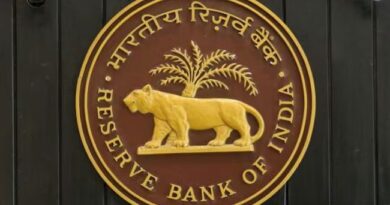Mutual Credit Guarantee Scheme for MSMEs: A Game Changer for MSME Financing

Introduction
Micro, Small, and Medium Enterprises (MSMEs) are the backbone of India’s economy, contributing significantly to GDP, employment, and exports. Despite their critical role, MSMEs often struggle to secure loans due to lack of collateral, stringent lending norms, and perceived high credit risk by financial institutions. To address these challenges, the Government of India has introduced the Mutual Credit Guarantee Scheme for MSMEs (MCGS-MSME). This initiative aims to make credit more accessible to MSMEs by reducing the risk for lenders through a structured guarantee mechanism.
Understanding the Mutual Credit Guarantee Scheme for MSMEs (MCGS-MSME)
The MCGS-MSME is a government-backed credit guarantee scheme managed by the National Credit Guarantee Trustee Company Limited (NCGTC). It provides a 60% guarantee cover on eligible term loans up to Rs. 100 crore for MSMEs engaged in purchasing equipment and machinery. This guarantee reduces the risk for banks and financial institutions, encouraging them to lend more freely to MSMEs.
The scheme is set to operate for four years or until a total guarantee of Rs. 7 lakh crore is provided, whichever comes first. It is a significant step toward bridging the financing gap faced by MSMEs and ensuring they receive adequate support to expand and modernize their businesses.
How MSMEs Benefit from MCGS-MSME
The scheme brings multiple advantages to MSMEs:
MSMEs can now secure term loans up to Rs. 100 crore for their projects, primarily involving the purchase of machinery and equipment. The scheme covers both new and existing projects, ensuring broader access to financial support. Borrowers with valid Udyam Registration Numbers are eligible, and the loan amount is determined based on their project requirements. Under this scheme, at least 75% of the total project cost must be allocated towards the purchase of equipment or machinery. This ensures that funds are primarily utilized for productive asset creation, strengthening the MSME’s operational capabilities. Additionally, the borrower should not be an NPA with any lender at the time of availing the loan, ensuring that only financially stable businesses benefit from the scheme.
For MSMEs requiring loans exceeding Rs. 100 crore, the scheme allows them to split the repayment schedules into two components: one for Rs. 100 crore and the second for the remaining amount. This structured approach ensures that repayment is manageable and aligned with business growth.
A major advantage of the scheme is the 60% guarantee cover, which significantly reduces the collateral burden. MSMEs that previously faced difficulties securing credit due to a lack of assets now have better opportunities for funding. The guarantee helps financial institutions mitigate risks, making them more willing to lend to MSMEs.
Additionally, the scheme provides flexible repayment options, with a repayment period of up to 8 years and a moratorium of up to 2 years on principal payments. This gives businesses ample time to establish themselves before beginning repayment.
To further ease financial strain, MSMEs need to make an upfront contribution of 5% of the loan amount (up to Rs. 5 crore). There is no guarantee fee for the first year, and from the second year onwards, a minimal annual guarantee fee is charged—1.5% for the first three years and 1% thereafter.
How Banks/ All India Financial Institutions/ NBFCs Benefit from the Scheme
While MSMEs gain better access to credit, banks/AIFIs/ Non-Banking Financial Companies (NBFCs) also stand to benefit:
Reduced Credit Risk: The 60% government guarantee reduces the lender’s exposure to risk, encouraging them to approve loans more easily.
Higher Loan Disbursements: Banks can now lend larger amounts to MSMEs, helping them achieve their priority sector lending targets.
Well-Defined Claim Process: If an MSME loan becomes a Non-Performing Asset (NPA), lenders can invoke the guarantee after Lock in period of two years from the date of commencement of guarantee cover, ensuring timely risk mitigation.
Efficient Recovery Mechanism: Financial institutions are required to follow structured recovery proceedings, ensuring that defaults are handled systematically.
Process for Availing Guarantee Cover
Financial institutions eligible under the scheme, including Scheduled Commercial Banks (SCBs)/AIFIs/NBFCs, must register with NCGTC to become Member Lending Institutions (MLIs). Once registered, they can submit loan applications for MSMEs through the NCGTC portal.
The guarantee cover issuance involves several key steps:
- Loan Sanctioning: MLIs upload loan details on the portal and generate a demand for upfront contribution (5% of the loan sanctioned minus collateral value).
- Guarantee Fee Payment: Guarantee Fee on loan under the Scheme shall be Nil during the year of sanction and The annual guarantee fee (1.5% for next three years, then 1%) must be paid within 30 days of loan disbursement.
Example to calculate the Upfront contribution/Annual Guarantee Fee under the scheme
Loan Sanctioned (S) – Rs.100 lakh
1st tranche of loan disbursed in sanction year or next year (D1)- Rs.30 lakh
2nd tranche of loan disbursed next year on 01.06.2025 (D2)- Rs.20 lakh
3rd tranche of loan disbursed next year on 01.09.2025 (D2)- Rs.50 lakh
Collateral Amount(C) – Rs.40 lakh
| Year | FY | Scenario | |
| Year 1 | 2024-25 | Upfront Contribution | Loan sanctioned (S)- Collateral Amount (C) =Rs.100 lakh-Rs.40 lakh = Rs.60 Lakh
Upfront Contribution=5% of Rs.60 lakh=Rs.3 lakh |
| Year 2 | 2025-26 | Renewal of Guarantee | Outstanding as on March 31, 2025 – Collateral Amount (C)
= Rs.30 lakh – Rs.40 lakh= Negative No Annual Guarantee Fee (AGF) applicable |
| 2 nd Tranche Disbursement on 1/06/2025 | (D1) + (D2) – (C) =30+20-40 = Rs.10 lakh
AGF will be calculated from 01/06/2025 till 31/03/2026 on Rs.10 lakh |
||
| 3 rd Tranche Disbursement on 1/09/2025 | (D1) +(D2)+ (D3) – (C)
=Rs.(30+20+50-40) lakh = Rs.60 lakh
AGF already paid on Rs.10 lakh for the year. Hence, AGF on balance amount of Rs.50 lakh will be calculated from 01/09/2025 till 31/03/2026 |
||
| Year 3 | 2026-27 | Renewal of Guarantee | Outstanding as on April 01, 2026 – Collateral Amount
= Rs.(100- 40) lakh= Rs. 60 lakh AGF will be calculated for FY 2026-27 on Rs.60 lakh |
Renewal of Guarantee: MLIs must ensure timely renewal of guarantees each year to continue coverage.
Reporting Loan Disbursement: Any disbursement must be entered into the portal within 7 days.
Claim Filing and Settlement
In the event of loan default, banks must follow a structured claim process:
NPA Marking: Lenders must mark the loan as NPA within 180 days of the account being so classified.
Interim Claim: Upon filing, 75% of the default amount is reimbursed within 30 days if all documents are in order.
Final Claim: The remaining 25% is paid once recovery proceedings conclude or when the decree becomes time-barred.
Legal Action Requirement: Before claiming reimbursement, lenders must initiate legal action via Lok Adalat, Civil Court, DRT, SARFAESI Act, or NCLT.
Key Considerations for MSMEs and Lenders
The scheme ensures that MSMEs maintain their MSME status at the time of loan sanction, even if they grow into a large enterprise later. It covers all business activities, with no restrictions on industry types.
Banks and NBFCs must carefully monitor MSME accounts and report any changes in borrower status. If an account marked as NPA returns to Standard classification, the lender must refund the claim amount and re-initiate the guarantee coverage.
The invocation of a guarantee claim under MCGS-MSME follows stringent guidelines. Claims are only considered if NPA reporting is done within the prescribed timelines, the guarantee fee is up to date, and legal proceedings for recovery have been initiated. Additionally, the required security must have been established prior to the account turning NPA, and all other scheme conditions must be met. Simply issuing a recall notice is not considered a valid initiation of legal action. Lenders must formally file cases in Lok Adalat, Civil Court, DRT, or take action under SARFAESI Act or NCLT to qualify for guarantee invocation. These steps ensure a robust and accountable claims process, protecting both MSMEs and financial institutions.
The scheme also sets a cap on claim payouts, ensuring structured financial discipline. The Trust shall pay 75% of the claim amount within 30 days of a valid claim being filed by the MLI, provided all necessary documents are in place. The remaining 25% will be disbursed only after recovery proceedings are concluded or when the decree becomes time-barred. Additionally, One Time Settlement (OTS) under the scheme is only permissible if legal proceedings have been initiated and at least one year has elapsed since their commencement. The OTS proposal must also comply with other scheme guidelines and be deemed reasonable under the lender’s Board-approved policy. These measures help maintain accountability in the claims process and ensure fair financial support to deserving MSMEs while safeguarding the Trust’s financial stability.
Conclusion
The Mutual Credit Guarantee Scheme for MSMEs (MCGS-MSME) is a groundbreaking initiative that aims to transform the MSME lending landscape in India. By providing government-backed guarantee cover, the scheme lowers the risk for financial institutions, enabling them to lend larger amounts with confidence. For MSMEs, this means easier access to credit, lower costs, and greater opportunities for expansion.
If implemented effectively, the scheme will not only boost MSME financing but also contribute to economic growth, job creation, and industrial modernization in India. As lenders and borrowers adapt to this new framework, MCGS-MSME could emerge as a key driver in making Indian MSMEs globally competitive.
Source: Operational Guideli
nes on Mutual Credit Guarantee Scheme for MSMEs issued by NCGTC
Authored By:
Murali Tummala,
Chief Manager-Faculty,
Union Learning Academy, Lucknow




